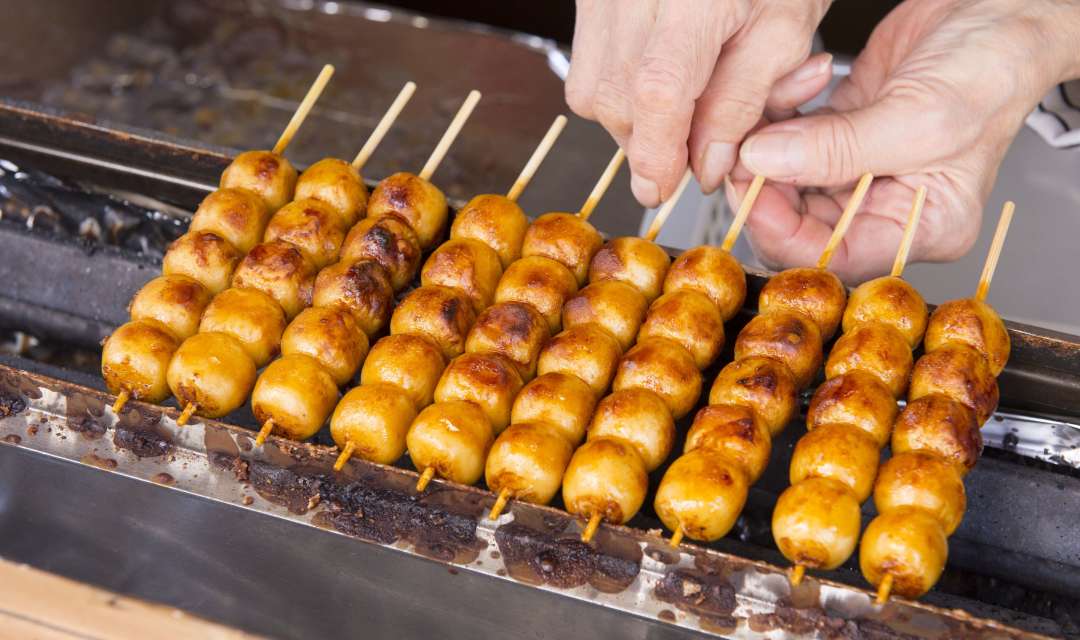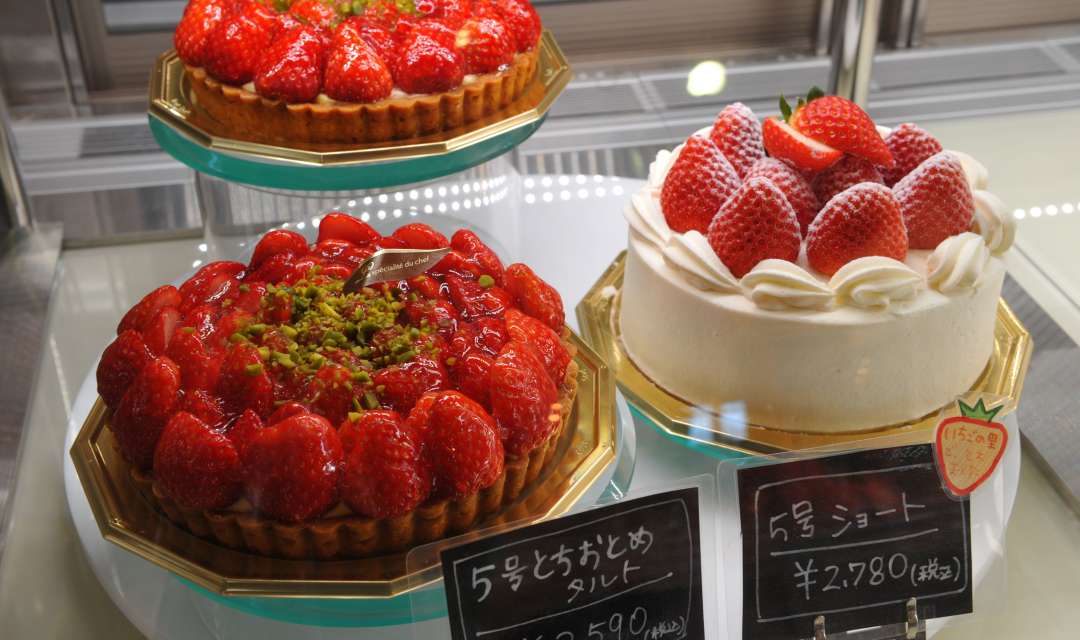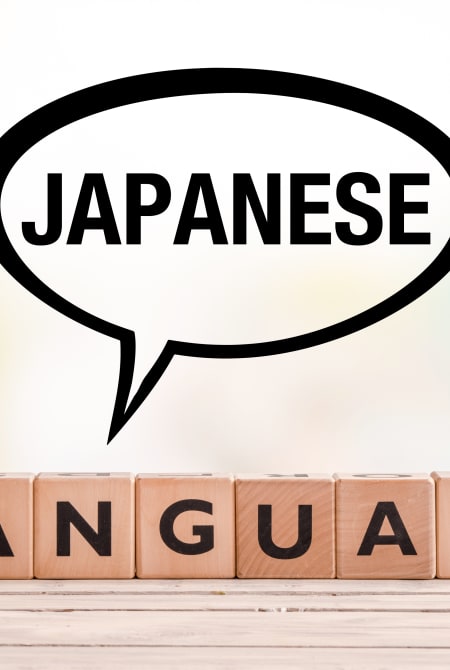Japanese desserts are complicated. Like Japan itself, where modesty and subtlety are key cultural values, Japanese sweets are delicate, understated, and ephemeral. But also like Japan, where neon lights the street and manic music blares from every arcade, desserts are over the top crazy and overflowing with sweet goodness. The meeting of traditional and modern means Japanese desserts get to be the carb-equivalent of Harajuku on a Saturday afternoon: anything goes, just make it interesting.
Visitors are often surprised by Japanese sweets. In general, desserts in Japan are less sweet than in many other places and more modestly flavored, but the exceptions prove the rule. The only way to learn is by listening to your sweet tooth and being on the lookout for these.
Dango are often sold at festivals Photo: ©JNTO
Mochi and Dango
Mochi is made of glutinous rice. The texture of the mochi is what makes this dessert unique -- slightly sticky, soft, but with a satisfying chew. Mochi is fundamental in Japanese sweets. It can be colored to match the season or brushed with sugar and grilled. It is often filled with red bean paste, fresh strawberries, or ice cream (then it’s called Daifuku.)
Dango are chewy, rice flour dumplings skewered on bamboo sticks, grilled until just lightly toasted, and brushed with a sweet and salty glaze. Dango are the cousin of mochi, as they are also made from glutinous rice and share a similar texture. They are often colored to match the season and found at outdoor festivals of all kinds.
Anko
Anko is a sweet paste made of cooked adzuki beans and sugar, also called red bean paste. It is another fundamental building block of Japanese desserts, showing up wrapped in mochi, stuffed between little golden pancakes (Dorayaki—the favorite snack of cartoon robot cat Doraemon), and a filling in grilled fish-shaped cakes called Taiyaki.
Wagashi make the perfect accompaniment to matcha tea Photo: ©JNTO
Wagashi
Wagashi is the term for small, ornate, seasonally-inspired sweets that are served during a tea ceremony. Often found as souvenirs featuring a fruit or nut from a specific area, wagashi are fun to collect and snack on as you travel.
Taiyaki and Dorayaki
Taiyaki is a sweet-filled waffle baked in the shape of a little fish, and dorayaki are small golden pancakes with a filling. These delicious-smelling treats are often sold at festivals, outside of temples, and in parks. Traditionally, both are filled with anko, but now green tea cream, chestnut, fruit jams, and chocolate are all popular.
Softo comes in some surprising flavors
Softo
Soft-serve ice cream (softo in Japanese) isn’t such a departure from similar soft-serve you find elsewhere, but the flavors make it a fun treat. Black sesame, green tea, strawberry (real fresh strawberries, not artificial flavoring), and red bean paste are all popular.
Monburan
A very Japanese way to pronounce “Montblanc”, this French/Italian dessert has become a staple. A soft cake is covered with a layer of chestnut cream, and then chestnut puree is piped on top, making a mountain of chestnut goodness.
Crepes
Why would this be a Japanese dessert? Well, because while the crepe itself might be French, the “kureipu” wraps the buckwheat pancake around an endless selection of sweet fillings: chocolate, whipped cream, custard, fruits, jellies, and sweets of all kinds. Sometimes you can find more traditional Japanese desserts chopped up inside, like anko-filled mochi crepes.
Japan gives good cake Photo: ©JNTO
Cakes, cakes, cakes
Cake is everywhere in Japan (check the sweet snack aisle of every grocery and convenience store across the country). The granddaddy of all non-Japanese sweets in Japan is castella cake, brought to Nagasaki by the Portuguese more than 500 years ago. This sponge is a simple cake made from flour, eggs, sugar, and syrup, and is now found everywhere, often flavored with seasonal or local ingredients like cherry blossoms, strawberries, or honey. Japanese cheesecake is a less sweet version of the American classic that is light and impossibly fluffy but retains a satisfying tang.
The Japanese universe of desserts extends beyond these basics; from traditional French pastry to Hello Kitty green tea donuts, there is a lot of exploring to do. Grab something sweet and start exploring!
-
About the author
Brock has lived in both the Kansai and Tokyo areas for more than six years, so he has his fair share of sweaty summers under his belt. He’s become an expert in finding some quiet nature to dip into on the weekends, knowing that you have to balance all-you-can-drink karaoke with fresh air.

























































